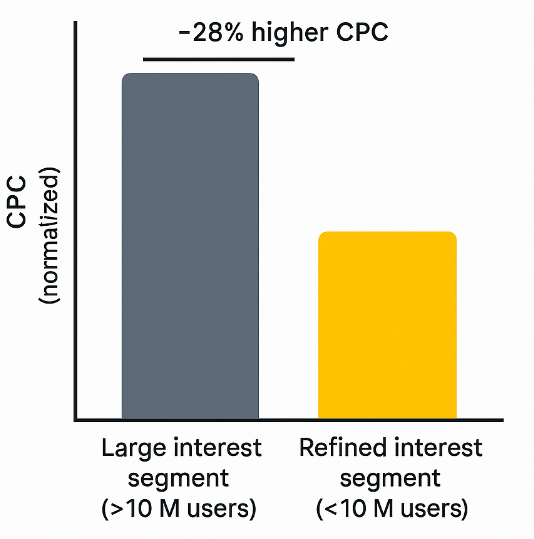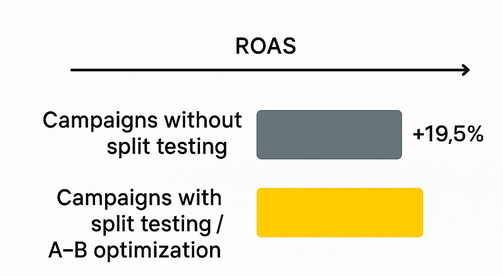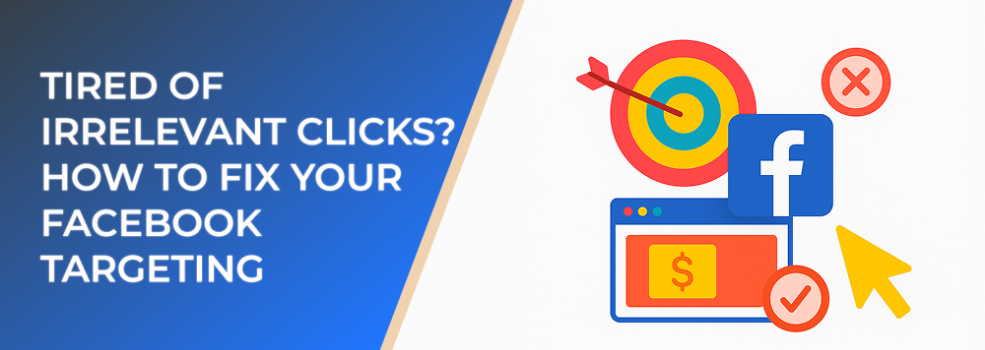Irrelevant clicks are more than a nuisance; they silently drain budgets and distort optimization signals. When the wrong people engage with your ads, Meta learns the wrong lessons. That means higher CPCs, weaker conversion rates, and a system optimized for people who never intended to buy.
Across recent performance studies, advertisers reported that between 25 and 45 percent of their monthly ad spend was wasted on users with low purchase intent. Even more concerning: campaigns with poorly defined audiences saw conversion rates drop by up to 33 percent.
The good news is that irrelevant clicks can be significantly reduced by using the targeting features most marketers overlook.
Step 1: Eliminate Broad Interest Clusters
Most broad interests group millions of users with widely varying intent. These pools are often too noisy to produce reliable conversions.

Useful statistic: Interest categories with more than 10 million users tend to generate CPCs up to 28 percent higher than smaller, more refined segments.
How to fix it
-
Break large interests into smaller behavior-based themes.
-
Test niche community interests rather than generic categories.
-
Use exclusions to remove low-value traits and unrelated subgroups.
Step 2: Use Behavioral Filters to Add Intent
Behavioral signals are often more accurate than stated interests. Purchase history, device behavior, and marketplace activity can dramatically increase the quality of your audience.
Useful statistic: Advertisers that layer at least two behavioral qualifiers see an average CPA reduction of 19 percent.
How to fix it
-
Add transactional or marketplace signals to refine purchase intent.
-
Segment by device type to improve creative relevance.
-
Pair a core interest with one to two high-intent behaviors.
Step 3: Leverage High-Intent Engagement Data
Not all engagement is equal. A user who saves a post or watches a video to 95 percent is significantly more valuable than someone who scrolls past and taps out of curiosity.
Useful statistic: Users who save or share a creative are 4.8 times more likely to convert than passive scrollers.
How to fix it
-
Build retargeting segments around meaningful interactions.
-
Use deeper video watch thresholds to filter out weak intent.
-
Test formats aligned to the engagement patterns you want.
Step 4: Restructure Your Funnel to Avoid Self-Competition
Irrelevant clicks often come from overlapping or competing ad sets. When multiple ad sets target similar people, you pay several times for the same low-value audience.
Useful statistic: Reducing audience overlap by 20 percent can improve ROAS by 12 to 18 percent.
How to fix it
-
Separate prospecting, mid-funnel, and retargeting audiences cleanly.
-
Add exclusions between funnel stages.
-
Refresh audience structures every 30 to 45 days.
Step 5: Rebuild Lookalikes with Higher-Quality Seeds
Lookalikes only work as well as their seed audience. Low-quality seeds produce broad, unqualified lookalikes that lead to weak clicks.

Useful statistic: Lookalikes generated from top-value customers can deliver up to 52 percent lower CPA compared to standard seed lists.
How to fix it
-
Use only your highest-value converters as a seed.
-
Refresh the seed pool monthly.
-
Scale gradually: start with 1 percent and expand outward.
Suggested Reading
Here are three related articles that expand on strategies discussed above:

